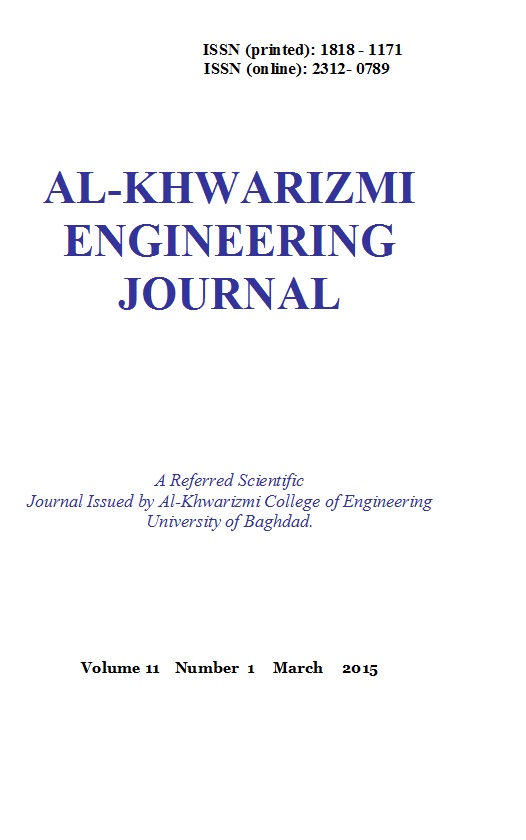Determination of Optimum Welding Parameters for FSW AA2024-T351
Keywords:
Keywords: Friction stir welding, DOE, RSM, Mechanical properties, Modeling and Optimization .Abstract
Abstract
Friction stir welding is a relatively new joining process, which involves the joining of metals without fusion or filler materials. In this study, the effect of welding parameters on the mechanical properties of aluminum alloys AA2024-T351 joints produced by FSW was investigated.
Different ranges of welding parameters, as input factors, such as welding speed (6 - 34 mm/min) and rotational speed (725 - 1235 rpm) were used to obtain their influences on the main responses, in terms of elongation, tensile strength, and maximum bending force. Experimental measurements of main responses were taken and analyzed using DESIGN EXPERT 8 experimental design software which was used to develop the response surface methodology (RSM) models. Mathematical model of responses, as functions of used welding conditions, were obtained and analyzed by ANOVA variance to verify the adequacy of these models. The resultant quadratic models showed that as the rotation speed or welding speed increases, the tensile strength and elongation of the joint firstly increase to a maximum value and then decrease more likely due to the occurrence of void defect. Increasing both welding speed and rotational speed leads to increase the maximum bending force firstly to a maximum value and then decreases. However, the welding speed was found more significant than rotational speed. A good agreement was found between the results of these models and optimization with the experimental ones with confidence level of 95%.
Keywords: Friction stir welding, DOE, RSM, Mechanical properties, Modeling and Optimization .
Downloads
Downloads
Published
Issue
Section
License
Copyright: Open Access authors retain the copyrights of their papers, and all open access articles are distributed under the terms of the Creative Commons Attribution License, which permits unrestricted use, distribution, and reproduction in any medium, provided that the original work is properly cited. The use of general descriptive names, trade names, trademarks, and so forth in this publication, even if not specifically identified, does not imply that these names are not protected by the relevant laws and regulations. While the advice and information in this journal are believed to be true and accurate on the date of its going to press, neither the authors, the editors, nor the publisher can accept any legal responsibility for any errors or omissions that may be made. The publisher makes no warranty, express or implied, with respect to the material contained herein.












